North America is home to a diverse array of wildlife, including some of the largest mammals on the planet. From mighty predators to gentle giants, these animals play crucial roles in their ecosystems and capture the imagination of nature enthusiasts around the world. In this comprehensive guide, we delve into the top 10 largest mammals in North America, exploring their characteristics, habitats, and conservation status.
North America’s 10 Largest Mammals
1. American Bison (Bison bison)
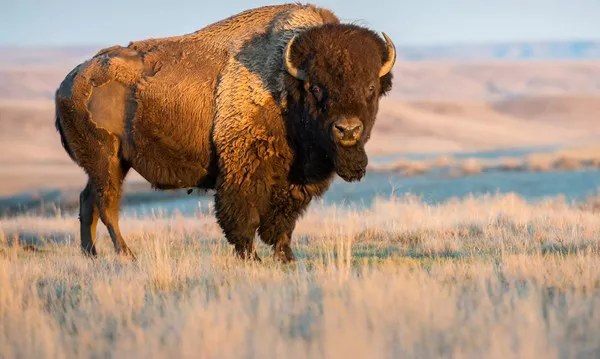
The American bison, also known as the buffalo, is an iconic symbol of the American West and the largest land mammal in North America. These massive herbivores once roamed the Great Plains in vast herds numbering in the millions. Today, they are primarily found in protected areas such as national parks and wildlife refuges.
Adult male bison, known as bulls, can weigh up to 2,000 pounds and stand over six feet tall at the shoulder. Females, or cows, are slightly smaller but still impressive in size. Bison are well-adapted to their grassland habitat, with large heads, humped shoulders, and shaggy coats that provide insulation against harsh weather conditions.
Despite their size and strength, American bison are herbivores, feeding primarily on grasses, sedges, and other vegetation. Their grazing behavior helps shape the landscape and promotes the diversity of grassland ecosystems.
Conservation efforts have helped stabilize bison populations in recent years, but they still face threats from habitat loss, disease, and competition with livestock. Conservation organizations and Native American tribes are working together to restore bison to their historical range and promote their cultural and ecological significance.
See Also: 10 Rarest Mammals in the UK
2. Moose (Alces alces)
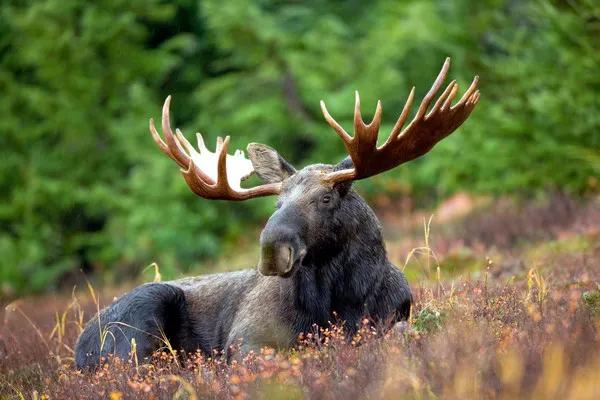
The moose is the largest member of the deer family and one of North America’s most iconic mammals. Found primarily in forested regions of Canada and the northern United States, moose are well-adapted to cold climates and dense vegetation.
Male moose, known as bulls, can weigh up to 1,500 pounds and stand over seven feet tall at the shoulder. They are distinguished by their broad antlers, which can span up to six feet across and are shed and regrown annually. Female moose, called cows, are smaller in size but still formidable.
Moose are browsers, feeding on a variety of woody plants, aquatic vegetation, and grasses. Their long legs and specialized noses allow them to forage in deep snow and dense vegetation, making them well-suited to their forest habitat.
Despite their impressive size, moose are preyed upon by wolves and bears, particularly calves and older individuals. Habitat loss, climate change, and disease also pose threats to moose populations in some areas.
3. Grizzly Bear (Ursus arctos horribilis)
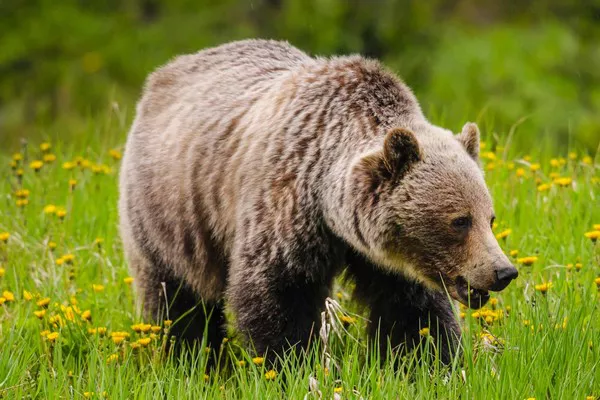
The grizzly bear, also known as the North American brown bear, is a symbol of wilderness and strength. Found primarily in western Canada and the northwestern United States, grizzlies are one of the largest and most powerful predators on the continent.
Adult male grizzly bears can weigh up to 1,500 pounds and stand over eight feet tall when standing on their hind legs. Females are smaller but still formidable in size. Grizzlies are characterized by their muscular build, humped shoulders, and distinctive shoulder hump.
Grizzly bears are omnivores, with diets that vary depending on the season and location. They feed on a wide range of foods, including berries, roots, nuts, fish, small mammals, and carrion. Grizzlies are known for their fishing skills, particularly during the salmon spawning season when they gather at rivers and streams to catch migrating fish.
Despite their fearsome reputation, grizzly bears are generally solitary animals and prefer to avoid humans. However, conflicts can occur in areas where bear habitat overlaps with human development, leading to efforts to manage and conserve grizzly bear populations.
4. Polar Bear (Ursus maritimus)
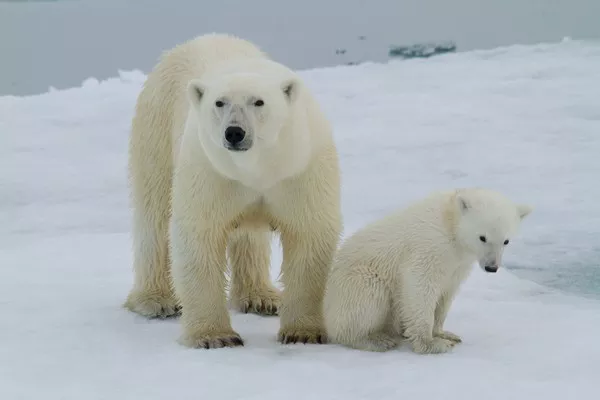
The polar bear is the largest land carnivore in the world and a symbol of the Arctic wilderness. Found primarily in the Arctic Circle, polar bears are superbly adapted to their icy habitat and rely on sea ice for hunting seals, their primary prey.
Adult male polar bears can weigh up to 1,500 pounds and stand over ten feet tall when standing on their hind legs. Females are smaller but still impressive in size. Polar bears are distinguished by their thick white fur, which provides insulation against the cold, and their powerful limbs and paws, which enable them to swim long distances and capture prey.
Polar bears are apex predators, with a diet that consists primarily of seals, although they will also scavenge carcasses and feed on other marine mammals and birds. Their dependence on sea ice for hunting makes them vulnerable to climate change, as melting ice reduces their access to prey and habitat.
Conservation efforts are underway to protect polar bear populations and their Arctic habitat, including measures to reduce greenhouse gas emissions and mitigate the impacts of climate change.
5. American Black Bear (Ursus americanus)
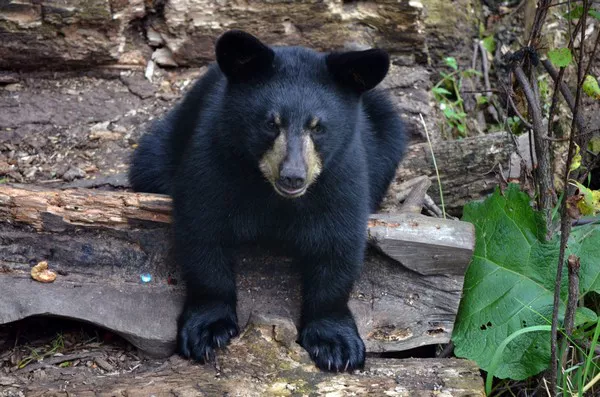
The American black bear is the most common and widely distributed bear species in North America, found in a variety of habitats ranging from forests and mountains to swamps and urban areas.
Adult male black bears can weigh up to 600 pounds and stand over six feet tall when standing on their hind legs. Females are smaller, typically weighing between 200 and 400 pounds. Black bears are highly adaptable omnivores, with diets that vary depending on their habitat and the season.
Despite their name, black bears can be black, brown, cinnamon, or even white in color, depending on their location. They are characterized by their stocky build, short snouts, and small, rounded ears. Black bears are excellent climbers and swimmers, allowing them to access a wide range of food sources and escape potential predators.
Black bears are opportunistic feeders, consuming a diverse array of foods, including berries, nuts, insects, small mammals, and carrion. They are also known to raid bird feeders, garbage cans, and other human food sources, leading to conflicts in urban and suburban areas.
Despite their adaptability and relative abundance, black bears face threats from habitat loss, poaching, and conflicts with humans. Conservation efforts aim to protect black bear populations and promote coexistence with humans through education, habitat conservation, and management strategies.
6. Elk (Cervus canadensis)

The elk, also known as the wapiti, is one of the largest species of deer in North America and a symbol of the wilderness. Found primarily in forested and mountainous regions of the western United States and Canada, elk are highly adaptable herbivores.
Adult male elk, known as bulls, can weigh up to 1,000 pounds and stand over five feet tall at the shoulder. They are distinguished by their impressive antlers, which can span up to five feet across and are shed and regrown annually. Female elk, called cows, are smaller in size but still formidable.
Elk are browsers, feeding on a variety of woody plants, grasses, and forbs. Their diet varies depending on the season and location, with elk migrating between summer and winter ranges to find food and avoid harsh weather conditions.
Elk play an important role in their ecosystems as both grazers and browsers, shaping vegetation dynamics and providing food for predators like wolves and bears. Conservation efforts aim to protect elk populations and their habitats, including measures to reduce habitat fragmentation and mitigate conflicts with humans.
7. North American Moose (Alces alces americana)
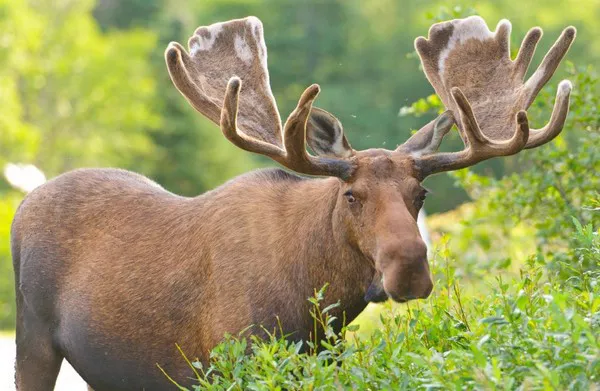
The North American moose is a subspecies of moose found primarily in Canada and the northern United States. It is closely related to the Eurasian moose and shares many of the same characteristics, including its large size and impressive antlers.
Adult male North American moose, known as bulls, can weigh up to 1,500 pounds and stand over seven feet tall at the shoulder. They are distinguished by their broad antlers, which can span up to six feet across and are shed and regrown annually. Female North American moose, called cows, are smaller in size but still formidable.
North American moose are browsers, feeding on a variety of woody plants, aquatic vegetation, and grasses. Their long legs and specialized noses allow them to forage in deep snow and dense vegetation, making them well-suited to their forest habitat.
Despite their impressive size, North American moose are preyed upon by wolves and bears, particularly calves and older individuals. Habitat loss, climate change, and disease also pose threats to moose populations in some areas.
8. Gray Wolf (Canis lupus)
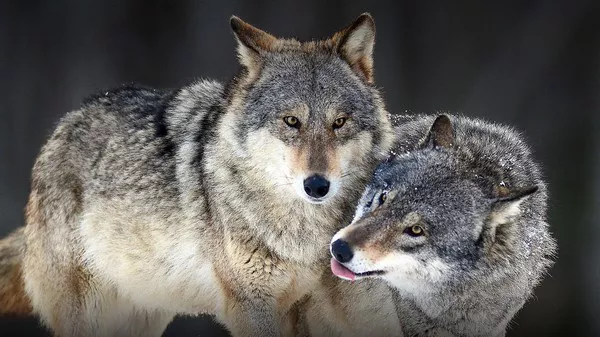
The gray wolf, also known as the timber wolf, is the largest member of the Canidae family and a symbol of wilderness and resilience. Found primarily in forested and mountainous regions of North America, gray wolves are highly adaptable predators.
Adult male gray wolves can weigh up to 130 pounds and stand over three feet tall at the shoulder. Females are smaller but still formidable in size. Gray wolves are characterized by their bushy tails, pointed ears, and keen senses, which enable them to hunt effectively in a variety of habitats.
Gray wolves are apex predators, with a diverse diet that includes ungulates such as deer, elk, and moose, as well as smaller mammals like rodents and rabbits. They are also scavengers, feeding on carrion and occasionally preying on livestock in areas where their ranges overlap with human development.
Despite their important role in maintaining healthy ecosystems, gray wolves have faced persecution and habitat loss throughout much of their historical range. Conservation efforts have helped restore gray wolf populations in some areas, but they continue to face threats from habitat fragmentation, poaching, and conflicts with humans.
9. North American Bison (Bison bison)
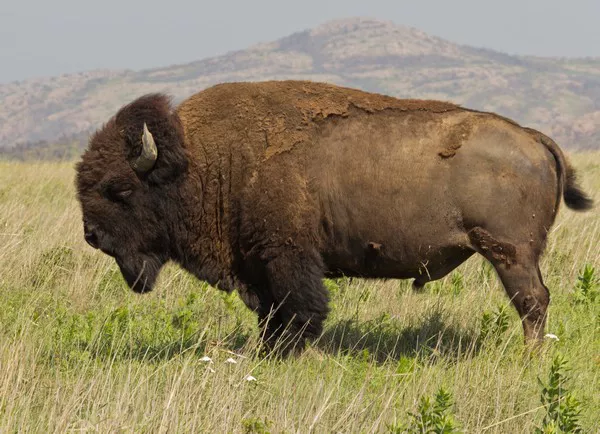
The North American bison, also known as the American buffalo, is the largest land mammal in North America and a symbol of the continent’s prairies and plains. Once numbering in the millions, bison were nearly driven to extinction by overhunting and habitat loss in the 19th century. Conservation efforts have helped restore bison populations in protected areas, but they remain a species of conservation concern.
Adult male bison, known as bulls, can weigh up to 2,000 pounds and stand over six feet tall at the shoulder. Females, or cows, are slightly smaller but still impressive in size. Bison are well-adapted to their grassland habitat, with large heads, humped shoulders, and shaggy coats that provide insulation against harsh weather conditions.
Despite their size and strength, North American bison are herbivores, feeding primarily on grasses, sedges, and other vegetation. Their grazing behavior helps shape the landscape and promote the diversity of grassland ecosystems.
Conservation efforts have helped stabilize bison populations in recent years, but they still face threats from habitat loss, disease, and competition with livestock. Conservation organizations and Native American tribes are working together to restore bison to their historical range and promote their cultural and ecological significance.
10. Walrus (Odobenus rosmarus)
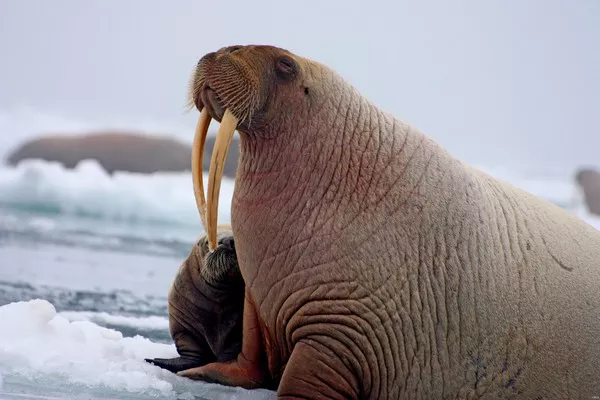
The walrus is a large marine mammal found primarily in the Arctic Circle, including the Arctic Ocean and adjacent seas. It is closely related to seals and sea lions and is known for its distinctive tusks and bristly whiskers.
Adult walruses can weigh up to 1,500 pounds and measure over ten feet in length. They are characterized by their massive bodies, broad flippers, and prominent tusks, which are elongated canine teeth that are used for foraging, defense, and social interactions.
Walruses are highly adapted to their Arctic habitat, with thick layers of blubber that provide insulation against the cold and allow them to survive in icy waters. They are opportunistic feeders, feeding primarily on clams, mussels, and other benthic invertebrates that they suck from the ocean floor using their powerful suction abilities.
Walruses are social animals, often forming large herds on ice floes or beaches during the breeding season. Conservation efforts aim to protect walrus populations and their habitat, including measures to mitigate the impacts of climate change and reduce human disturbances.
See Also: Top 10 Largest Carnivorous Mammals (Plus Pistures!)
Conclusion
North America is home to a diverse array of mammals, ranging from massive predators like grizzly bears and gray wolves to gentle giants like American bison and moose. These animals play crucial roles in their ecosystems, shaping landscapes, controlling prey populations, and contributing to biodiversity.
Despite facing threats from habitat loss, climate change, and human disturbance, many of North America’s largest mammals are the focus of conservation efforts aimed at protecting their populations and preserving their habitats.
You Might Be Interested In:

























